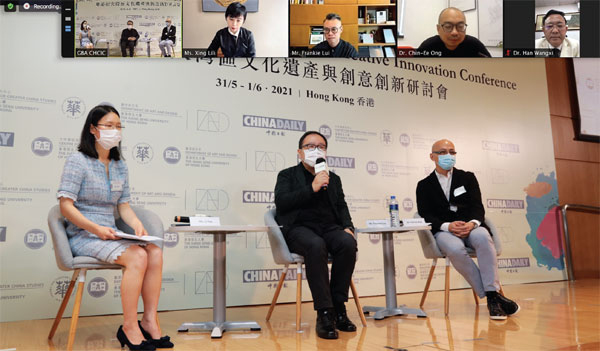The Bay Area at heart of cultural revival
Region's similarities in linguistics, culture will help achieve arts, innovation hub dream, experts say
With the Guangdong-Hong Kong-Macao Greater Bay Area gearing itself up as a mecca for arts and culture, the vibrant region, with an open mind, creative thinking, great respect for traditional cultures and an in-depth understanding of its history, is at the forefront of the culture-led, innovation-driven urban renaissance.
The views were espoused by experts at the China Daily Asia Leadership Roundtable in Hong Kong on Tuesday. The event was held as part of the two-day Greater Bay Area Cultural Heritage and Creative Innovation Conference, themed "Establishing the Cultural and Creative Nexus for the Guangdong-Hong Kong-Macao Greater Bay Area".
A 20-page development road map through 2035 unveiled by China's Ministry of Culture and Tourism in December last year bolstered the nation's vision of catapulting the Greater Bay Area into an arts and culture destination.

Freeman Lau Siu-hong (center), secretary-general of the Hong Kong Federation of Design Associations, shares his insights with other panelists at a roundtable themed "Establishing the Cultural and Creative Nexus for the Guangdong-Hong Kong-Macao Greater Bay Area" on Tuesday. Photos by Edmond Tang / China Daily
Han Wangxi, director of the Shenzhen Innovative and Creative Design Development Office, emphasized the significance of showing great respect for traditional Chinese cultures, based on the undertakings and goals of building shared cultural values.
The Hong Kong and Macao special administrative regions, along with nine Guangdong cities in the Greater Bay Area cluster, should be further connected through minds and souls, taking advantage of their cultural and linguistic similarities, he said.
Equal importance should be attached to the concept that "culture is mobile". "The mobility of culture is the innovation of culture. As we're on the cusp of great cultural change, Shenzhen is exactly an innovation-driven city. At the heart of Shenzhen's culture making is the spirit of innovation," Han said.
He also highlighted the increased collaboration between Shenzhen and Hong Kong in the Greater Bay Area in creating an inclusive and diversified regional culture.
"It used to be said that the Greater Bay Area has no history. But I've discovered from the Nantou City project that such an impression is wrong. It's just that we had not paid adequate attention to this aspect before," Freeman Lau Siu-hong, secretary-general of the Hong Kong Federation of Design Associations, told the conference.
Nantou City, located in downtown Shenzhen, has a history of more than 1,700 years and is believed to be the origin of the southern Guangdong metropolis. However, it had been neglected in the past, with so many historical landmarks and fortifications there standing in the midst of residential buildings housing migrant workers.
In fact, many Hong Kong people also hail from this location, Lau said. The Shenzhen government started a project to renovate Nantou in 2019, and Lau was invited to participate. After an in-depth study of Nantou's history and culture, he found the place full of development potential for cross-border design and creative cooperation.
Nantou City is now home to an array of renowned traditional Cantonese cuisine brands, exhibition and art studios, fashion shops and bookstores from both Guangdong province and Hong Kong.



 Print
Print Mail
Mail